Here at ColeMone, roughly once a month, we write a post explaining terminology that may be complicated for newcomers to the field. Typically, it’s numismatic vocabulary, but today we’re switching gears and moving into banknotes: we’ll discuss replacement notes. I’ll give you a definition, tell you why they’re printed, and provide some examples of replacement notes.
A replacement note is a banknote belonging to a series made specifically to replace those that come out defective during the normal manufacturing process. Typically, replacement notes are marked with a special symbol or code in their serial number.
What are replacement notes used for?
Within each type of banknote, the serial number is always unique and exclusive to a specific banknote. And, through that number, each Central Bank has complete control over how many notes are printed and how many are put into circulation.
This allows for an exact count of how much money in banknotes is in circulation in a given economy. For example, the European Central Bank knows that there are 27.5 billion banknotes in circulation in the Eurozone.
And that’s because there is always the same number of banknotes in each batch produced.
But what happens when an error occurs in the manufacturing of a banknote and it comes out defective?
Well, when it’s detected by the quality controls of the printing house, it’s withdrawn and destroyed. But that poses a problem: the batch has one less banknote than it should. So, to maintain the same number, one more banknote is added.
A banknote with the same serial number as the destroyed one could be added, but that costs a lot of money and time. The machines are programmed to print serial numbers sequentially (000001, 000002, 000003, etc.), but since errors happen randomly, the serial numbers of the destroyed banknotes are not sequential. That means that the machine would have to be reprogrammed each time a banknote is reprinted, and that is impractical.
So, instead of doing all that, they print a batch of banknotes marked with a special code, and each time an error appears, it’s replaced with one of them. Hence the name “replacement note”.
Examples of replacement banknotes
Distinguishing a replacement banknote from a regular one is usually quite easy. Most countries have a specific method to identify them, and these methods can be broadly divided into three types (the classification is mine, don’t take it as gospel):
- Type 1: Alphanumeric code
- Type 2: Special letter(s)
- Type 3: Symbols
Let’s see an example of each:
Type 1: Alphanumeric – Spain: “9-letter” banknotes
From 1970 to 2001, the Spanish National Mint marked its replacement banknotes by starting their serial number with the digit 9 and a letter. It was almost always the letter A, but other letters such as B, D, E, F, or J have also been used.
These series are part of what the Bank of Spain calls “special series,” which also includes those issued for statistical study purposes (I will talk about them another day).
For example, let’s take a look at the 500 pesetas banknote from 1979 featuring Rosalía de Castro. The serial number of a regular banknote begins with any number and letter, like in this consecutive pair (top left corner):
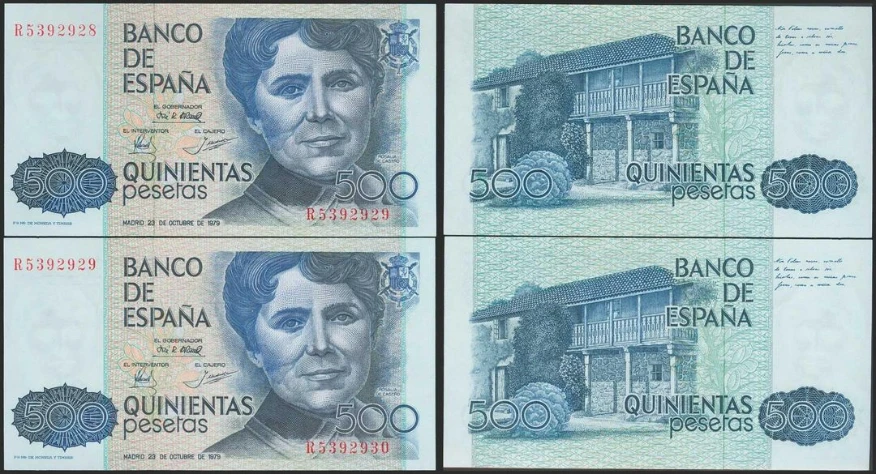
Or they may simply not have a letter. These, for example, have a nice round serial number:
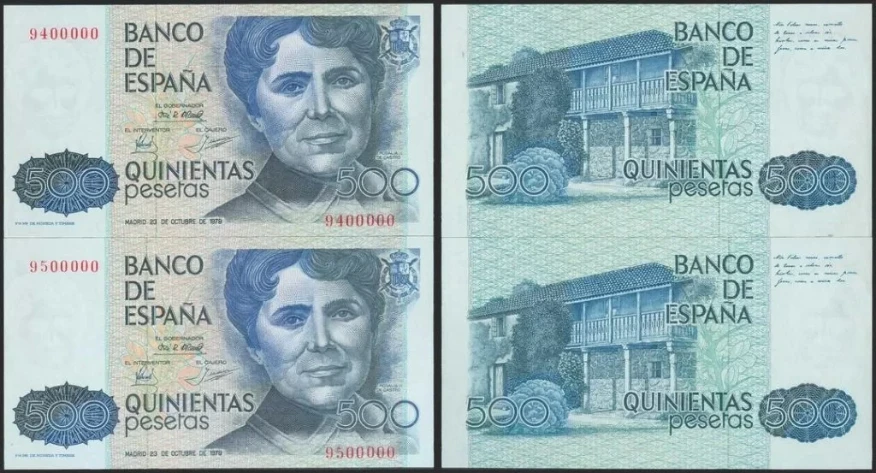
The Rosalía bill has two replacement series. The first is the 9A series, which is relatively easy to find:
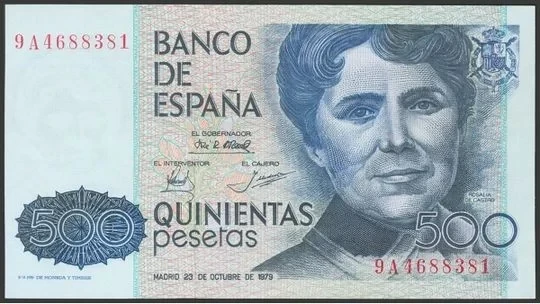
But there is also an extremely rare second series, the 9B series, of which about 20 specimens are known:
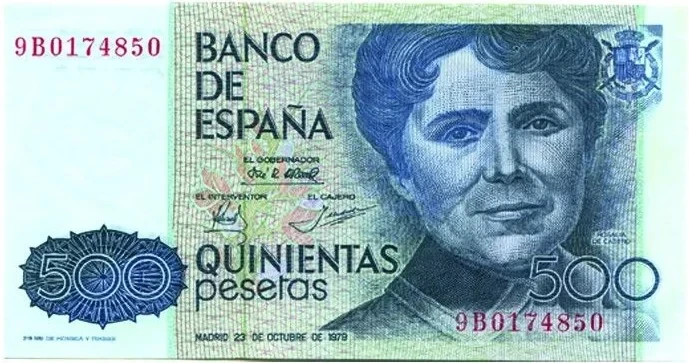
Type 2: Special letter – Argentina: R bills
Many countries simply add one or two letters before the serial number. Most of the time there is a Z in the mix, like Guatemala (“Z”), Scotland (“ZZ”), Nigeria (“DZ”), or Serbia (“ZA”).
But Argentina does it differently: it adds an R (I assume it stands for “reemplazo”, Spanish for “replacement”) before the serial number.
For example, this is a regular version of the “Evita,” the 100 pesos note issued in 2012 commemorating the 60th anniversary of Eva Perón’s death, and the first Argentine banknote ever to feature a woman. The serial number appears in two positions: horizontally in the upper right corner, with the digits going from a smaller to a larger font, and vertically on the left-hand side:
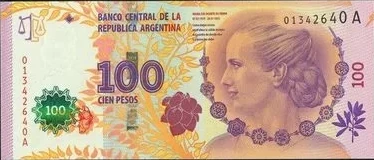
And this is its replacement version, where you can see the “R” just before the serial number:
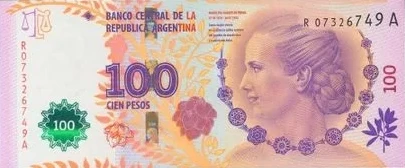
Type 3: Symbols – United States: Star Notes
When quality controls at the Bureau of Engraving and Printing of the US Department of the Treasury detect a defective bill at the end of the manufacturing process (if they detect them, as there are times when they don’t, like it happened with the Del Monte Note), employees remove it from the production line and replace it with one of the so-called “Star Notes,” their version of a replacement note.
These Star Notes bear the same serial number as the replaced bill, to which a five-pointed star is immediately added before or after the digits.
For example, this 1953 $2 bill has the star placed before the number. The serial number is to the left of the portrait of Thomas Jefferson:

However, on these $100 bills from the 2006 series, the star appears after the serial number. This time, you will find it to the left of the portrait of Benjamin Franklin, the only non-president to appear on a US bill:

Perhaps, seeing the difference in years between both bills, you may be thinking that whether the star is before or after depends on when it was issued. And you would be right. The change was made around 1977.
And are replacement bills valuable?
Well… it depends on the bill.
Assuming they are in perfect condition, the value of a replacement bill will almost always be inversely proportional to the number of replacement bills that have been put into circulation: the fewer there are, the more valuable they are.
And with that idea in mind, as you can imagine, some are only slightly more valuable than their regular version, like Rosalia’s 9A bill, and others are incredibly more valuable than the regular version, like Rosalia’s 9B bill.